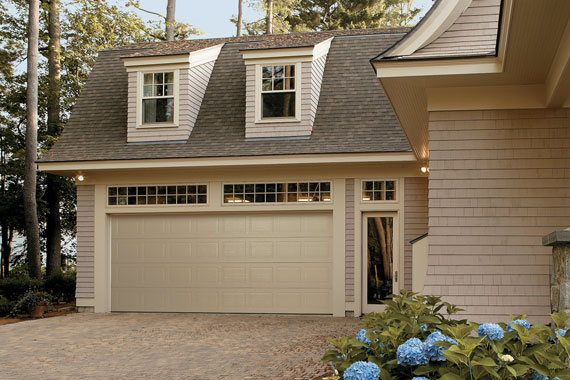Garage doors are designed to last a good 15 to 20 years. If you want your garage door to take full advantage of these years and live a long, durable life then it’ll need to maintain a healthy appearance and stature. Cleaning your garage door on a regular basis guarantees a sustained health and provides the proper foundation for an optimal lifespan.
It sounds simple enough, but the problem, however, lies in learning how to hit the curve balls of cleaning your garage door. There are different types of garage doors, all of which require different techniques for cleaning. Not to mention, you never know what might happen to your garage door. Chances are you’ll come across situations you never thought would happen and you’re left scratching your head wondering what to do.
The following are ways to clean your garage door depending on its material type (aluminum, steel or wood) and what your cleaning situation is.
Dirt, Dust & Grime
Dirt, dust and grime are easily the most common garage door nuisances. The good news is they’re the simplest to clean.
-
Aluminum: Aluminum is a pretty easy clean. Mix some detergent and water together, grab a cloth or soft brush and getting to scrubbing. Then give it a good rinse and you should be good to go. If you come across stubborn grime and it just won’t come off, you can use a power washer. You might have to touch up the paint if it’s old and doesn’t have a protective coating.
-
Steel: Steel garage doors usually come with a durable manufactured coating, but still cleaning it regularly will reduce the need for repaints. You can mix one cup of non-toxic biodegradable cleaner, which should contain less 0.5% phosphate, with two gallons of warm water. Or mix one cup of household ammonia with five gallons of water. Use latex gloves as you use a gentle cloth or rag to wipe down the garage door. Once wiped down, go back over it with plain water to remove the coating of any chemicals to avoid corrosion.
-
Wood: Wood requires a more delicate approach to cleaning since it’s more sensitive. It’s not recommended to power wash wood, especially if it’s the soft type. Simply use a soft brush and water. Unless you have a protective finish on the door, avoid soap so the wood doesn’t dry out.
Glue, Residues
For whatever reason, you should never glue anything to your garage door. Alas, it has happened, though, whether it’s for holiday decorating or attempting to jazz up your garage door’s appeal. If you decide to go back to the basics and remove those items from the door, here’s how to get rid of that pesky glue residue.
-
Aluminum/Steel: Glue is a tricky substance to remove. The goal here is to soften it up so you can scrape it off. You can apply a solvent, multiple times if needed. That should soften it up, which will allow you scrape it off. Depending on the type of paint on your door, it’s best to speak to a paint expert. They can help guide you into deciding which solvent would work best so as not to damage the paint.
-
Wood: Wood is definitely one of the worst places to have glue. It could easily damage the surface if you’re not careful. It is possible, though. It’s been said that vinegar can remove glue from wood. Wet a cloth with warm vinegar and commence rubbing and compressing the spot of glue. After awhile, you should be able to rub the glue/residue from the wood without damaging it.
Written by the staff of G.P. Construction, the leading experts in garage door repair Columbia MO has to offer!
Sources:
https://www.akzonobel.com/ccna/system/Images/AkzoNobel_Care_and_Maintenance_Guide-Entry_Garage_%20Doors_tcm38-18093.pdf
